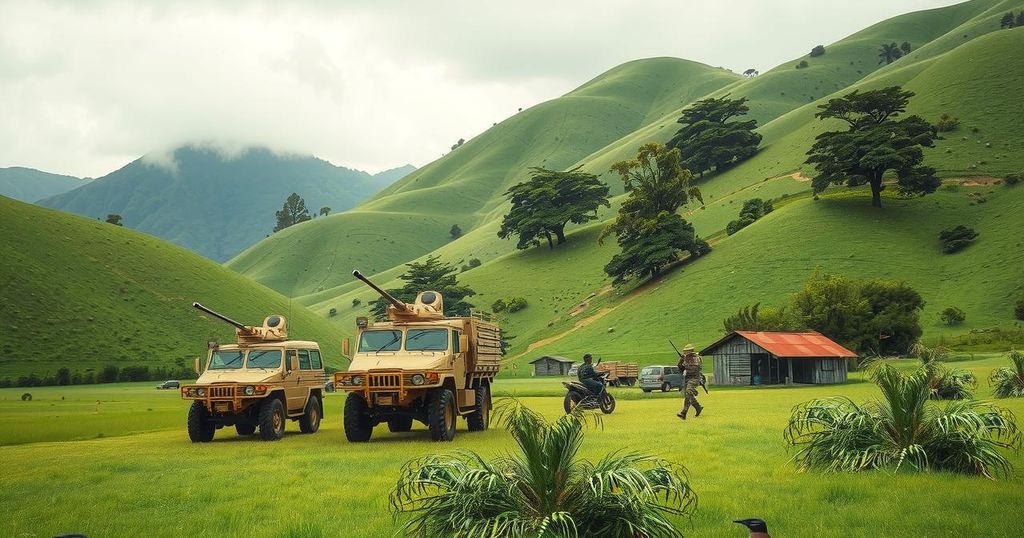DR Congo Army Halts M23 Rebel Advances and Initiates Conflict Resolution Plans
The DR Congo army halted M23 rebel advances towards Walikale-Centre on March 17, after military reinforcements were deployed. A subsequent meeting of EAC and SADC ministers led to the adoption of a conflict resolution roadmap that includes dialogue initiatives and oversight mechanisms. However, the region continues to face unrest with ongoing accusations against Rwanda for its involvement with the rebels.
The Democratic Republic of Congo’s army, alongside their Wazalendo allies, effectively stalled the latest advances of the M23 rebels and the Alliance Fleuve Congo (AFC) aimed at capturing Walikale-Centre. On March 17, military reinforcements dispatched from Bunia succeeded in pushing the rebels back to Mpofi, approximately 52 kilometers from the central area.
Following the military intervention, tranquility was restored to the region on March 18; however, the presence of military personnel remains substantial, with few civilians seen in the streets. Many residents have fled towards neighboring villages along the national highway leading to Kisangani, specifically to Losso, Mungele, Tingitingi, Lubutu Mubi, Ndjingala, Lobu, and Makana, located on the border between North Kivu and Maniema.
In light of the conflict, ministers from the East African Community (EAC) and the Southern African Development Community (SADC) convened in Harare, Zimbabwe on March 17. They adopted a strategic roadmap aimed at implementing resolutions from their joint summit while refraining from directly implicating Rwanda in supporting the M23 movement. The meeting, initially scheduled for February 28, was postponed.
The roadmap outlines immediate and long-term conflict resolution strategies in Eastern DR Congo. Among these strategies are provisions for direct military dialogues, an unconditional ceasefire, a cessation of hostilities, and necessary humanitarian access. The opening of Goma and Kavumu airports is also specified to enable unobstructed evacuation from conflict zones.
An oversight mechanism comprising representatives from SADC and EAC will be established to monitor the ceasefire. Moreover, there will be a joint technical evaluation team of 12 to 16 experts from military and government sectors aimed at assessing both security conditions and critical infrastructure in North and South Kivu provinces, including airports and essential facilities.
Despite the absence of a declaration directly identifying Rwanda’s role, various United Nations reports indicate the involvement of the Rwandan army in the conflict, fighting alongside M23 for territorial gains in North Kivu. The eastern province of DR Congo has experienced ongoing strife, strongly linked to regional tensions that date back to the Rwandan genocide of 1994, with DR Congo accusing Rwanda of attempting to exploit its resources.
The Democratic Republic of Congo’s military has successfully thwarted M23 rebel advances, ensuring temporary peace in Walikale-Centre. Nonetheless, the situation remains precarious, with numerous residents displaced. Meanwhile, regional leaders have laid out a strategic roadmap seeking to resolve the enduring conflict in Eastern DR Congo, aiming to facilitate humanitarian access and establish effective monitoring mechanisms, despite ongoing tensions with Rwanda.
Original Source: humanglemedia.com




Post Comment